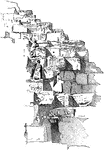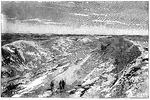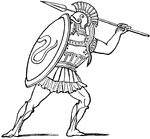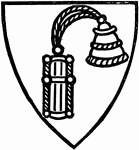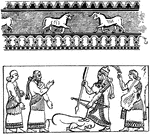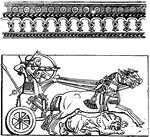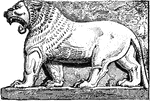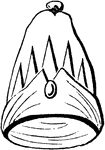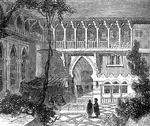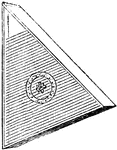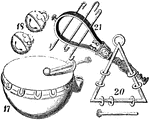
The Sheikh-El-Beled
"Supposed portrait of one of the overseers of the work on the Great Pyramid. This is one of the masterpieces…

The Judgment of the Dead
"Showing the weighing of the heart of the deceased in the scales of truth."—Myers, 1904
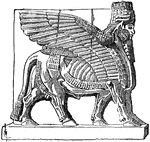
An Assyrian Winged Bull
Also known as a Lamassu. An ancient tutelary deity, often considered to be female.
Combat Between Achilles and Hector
A depiction of the mythological combat between Achilles and Hector.
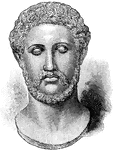
Alcibiades
A prominent Athenian statesman and member of the aristocratic family of the Alcmaeonidae.

The Dying Gaul
A Roman copy of an ancient Greek sculpture. The copy is made of marble, while the lost original sculpture…

Lictors with Fasces
"The symbolic fasces borne by these officers were probably of Ertuscan origin. The Tarquins are said…
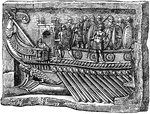
Prow of a Roman War Ship
"The representation shows the arrangement of the tiers or oars in a two-banked ship. In just what way…
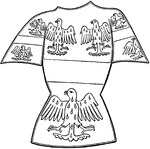
Tabard
A common item of men's clothing during the Middle Ages. It is a short coat with short sleeves or shoulder…

Eagle
The heraldic charge of the eagle is one of the earliest charges. It holds the same rank that the lion…
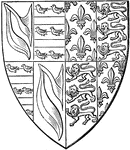
Shield of John de Hastings
"Shield of John de Hastings, K.G., Earl of Pembroke, Quatering De Hastings and De Valence, and impaling…
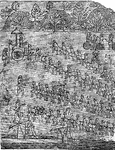
Winged Bull
An ancient Assyrian wall relief, depicting the symbol of a winged bull with the head of a human male.
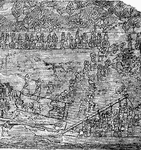
Assyrian Lion
A wall relief of the ancient Assyrian lion. These sculptures were placed in doorways as protective entities.
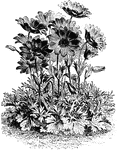
Anemone Fulgens Flower
The anemone fulgens flower is a dazzling scarlet color with a black central patch of stamens. This flower…

Fruiting Branch of Fig
Fig is a fruit producing tree. The cultivation of figs goes back to ancient times. It is native to the…
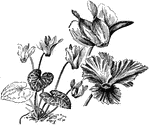
Cyclamen Persicum
Shown is a flower of perfect form and the crested variety of cyclamen persicum. The plant is native…

Ice Plant
The flowers of the ice plant are small, whitish or varying to light rose color. It is native to South…
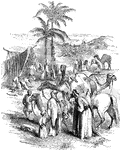
A Scene In Arabia
An illustration of an outdoor scene in ancient Arabia. Pictured are camels, shepherds, and others going…
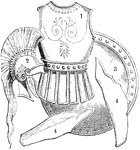
Arms and Armor
An array of miscellaneous ancient armors. The image depicts (1) a cuirass, often referred to as a coat…
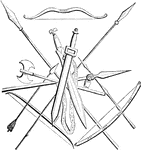
Arms and Armor: Weapons
An array of weapons used in ancient times (some of which are still used today). Among these weapons…

The Acropolis
An image of the Acropolis, as it was, seated in Athens, Greece. The Acropolis is an ancient, famed citadel…

Gonfanon
The gonfalon, gonfalone (from the early Italian confalone) is a type of heraldic flag or banner, often…

Gladiators
This illustration shows various types of gladiators, each type with with his specific weapons attributed…

Early Glove
This illustration shows an early form of a glove, used to cover the hands. This glove was likely made…
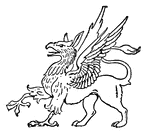
Griffin
In heraldry, the griffin is a fabulous animal, with the head and forefeet of an eagle, and the body,…
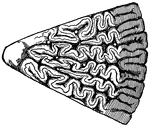
Section of Tooth of Typical Labyrinthodont
This illustration shows a section of a tooth of a typical Labyrinthodont. Labyrinthodont, or Stegocephali…
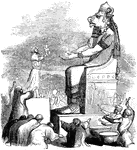
Moloch Being Worshipped
Moloch (or Mo'lech) is the name of an ancient deity which was worshipped by the Ammonites. The Israelites…
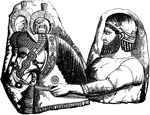
Warrior and horses
An engraving of a warrior and horses from the mound of Khorsabad, Nineveh. (Capital of ancient Assyria).

